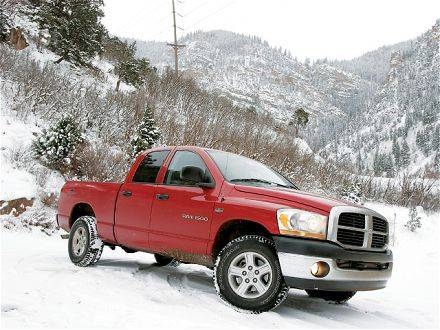
Starting a diesel fueled engine in very cold weather can be rather frustrating, and an often critical part of winter emergencies. Imagine being stranded knowing that starting your engine is the only way to stay warm--you'll want to know these tips for starting a Dodge RAM with a diesel engine before getting into that situation. As it turns out, there are several important tips that will keep your Dodge diesel ready to start, even at a cold moment's notice.
The battery is the key to a successful start. Make sure that the battery is in top shape. Most light-moderate duty diesel batteries, as compared to heavy duty semi trucks, are more capable than their gasoline counterparts. Often, batteries designed for diesel applications have a CCA, or "Cold Cranking Amps," rating listed on the case. It is best to balance this number with the longevity of the battery, as batteries with higher amperage ratings often have drastically shorter life spans.
Give your engine a head start with proper lubrication. Lubricate your engine and driveline with dedicated diesel fluids that have lower comparative viscosities, especially in the winter. Engine oils with lower viscosities will offer less flow resistance, thus demanding less energy from the battery to turn the engine fast enough for a successful start.
The best way to combat the cold is with, well, heat. Keep the engine, battery and fuel system warm with their respective heaters. An engine block and battery warmer will keep the engine in a more favorable temperature range for starting. Likewise, using #1 diesel fuel rather than #2, and keeping the tank and fuel lines warm with a fuel system heater, will prevent the fuel from gelling, thus facilitating a successful start. Using glowplugs to warm individual cylinders will also aid in the starting process.
The starter needs all of the resources of the battery as possible to have enough power to start the engine. Turn off all other unnecessary auxiliary items that use battery power. Furthermore, upgraded starter motors and batteries further make the starting process less stressful for the car and the driver.
Attempt to start the engine. If it was successfully winter-proofed with the preceding steps, it should start very easily. Otherwise, the only thing that can really start the motor is a jump from another, more capable battery.
If the engine indeed starts, let it idle for several minutes to warm up the oil and engine components. Cold engine parts are more brittle under high load, and warm oil is more capable of lubricating engine parts further from the oil reservoir.